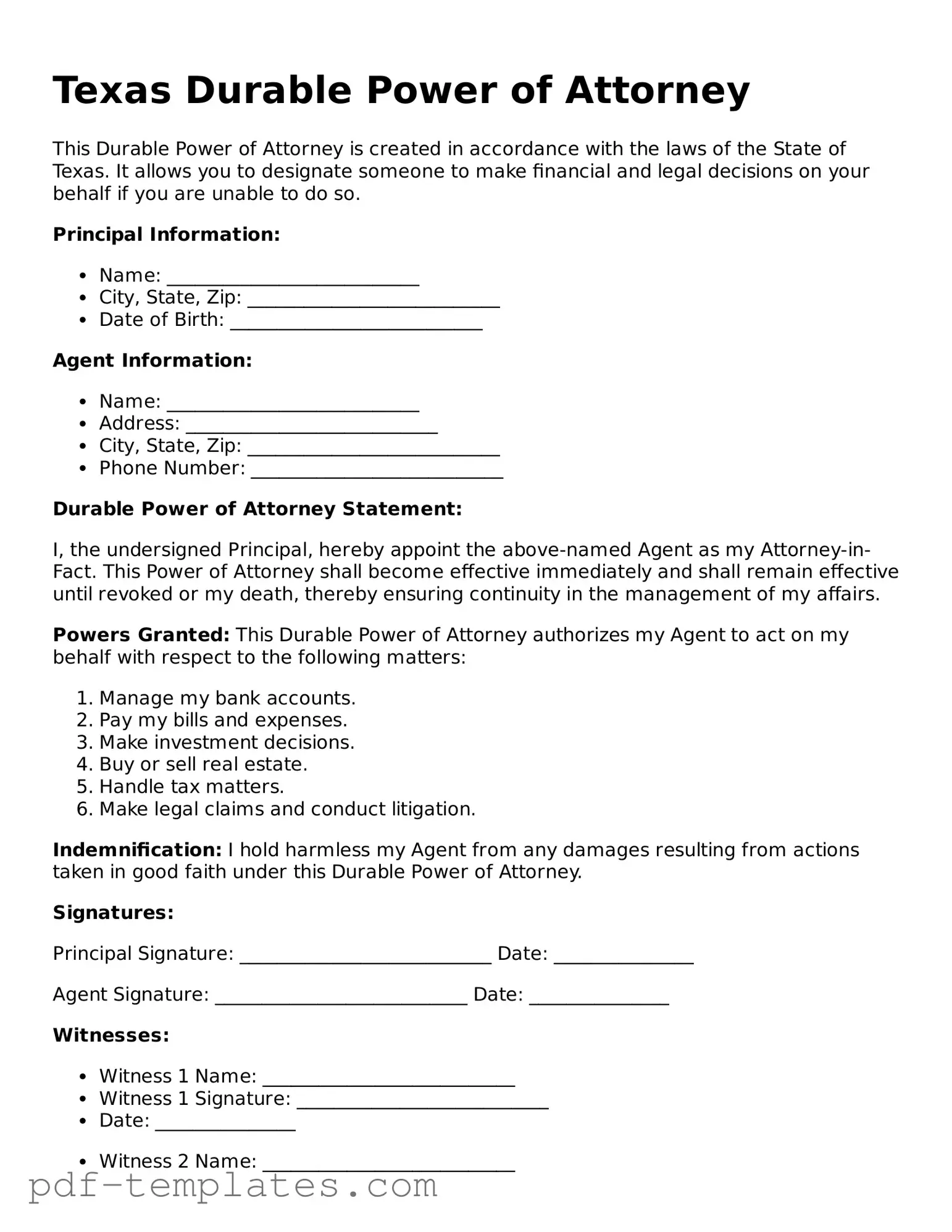The Texas Durable Power of Attorney form is similar to the General Power of Attorney. Both documents allow an individual to appoint someone else to make decisions on their behalf. However, the General Power of Attorney typically becomes invalid if the principal becomes incapacitated. In contrast, the Durable Power of Attorney remains effective even if the principal is unable to make decisions due to health issues. This makes the Durable Power of Attorney a more robust option for long-term planning, especially for those concerned about future incapacity.
Another document that shares similarities with the Texas Durable Power of Attorney is the Medical Power of Attorney. While the Durable Power of Attorney can cover a wide range of financial and legal decisions, the Medical Power of Attorney specifically focuses on healthcare decisions. This document allows someone to make medical choices for you if you are unable to do so. Both forms empower a trusted individual to act on your behalf, ensuring that your wishes are respected in different areas of your life.
The Living Will is yet another document that complements the Texas Durable Power of Attorney. A Living Will outlines your preferences for medical treatment in situations where you cannot communicate your wishes, such as terminal illness or severe injury. While the Durable Power of Attorney allows someone to make decisions for you, the Living Will provides specific guidance on what those decisions should be regarding life-sustaining treatment. Together, they create a comprehensive plan for both health and financial matters.
The Revocable Trust also bears resemblance to the Durable Power of Attorney. Like the Durable Power of Attorney, a Revocable Trust allows for the management of assets and can provide for the distribution of property upon death. However, a Revocable Trust is a separate legal entity, which can help avoid probate and maintain privacy. While the Durable Power of Attorney is effective during your lifetime, the Revocable Trust can continue to manage your assets after your passing, making it a useful tool for estate planning.
The Guardianship document shares similarities as well, particularly in situations where an individual may need assistance in making decisions. A Guardianship is a court-appointed arrangement that grants authority to someone to make decisions for another person who is deemed incapacitated. While the Durable Power of Attorney allows you to choose your representative, Guardianship is established through the legal system. This can make the Durable Power of Attorney a preferable option for those who wish to avoid court intervention in their affairs.
Lastly, the Advance Directive is closely related to the Durable Power of Attorney. An Advance Directive combines elements of both the Living Will and the Medical Power of Attorney. It allows individuals to express their healthcare wishes and appoint a decision-maker for medical care. While the Durable Power of Attorney focuses on financial and legal matters, the Advance Directive ensures that your healthcare preferences are clearly communicated and respected. This combination can provide peace of mind for individuals planning for the future.
